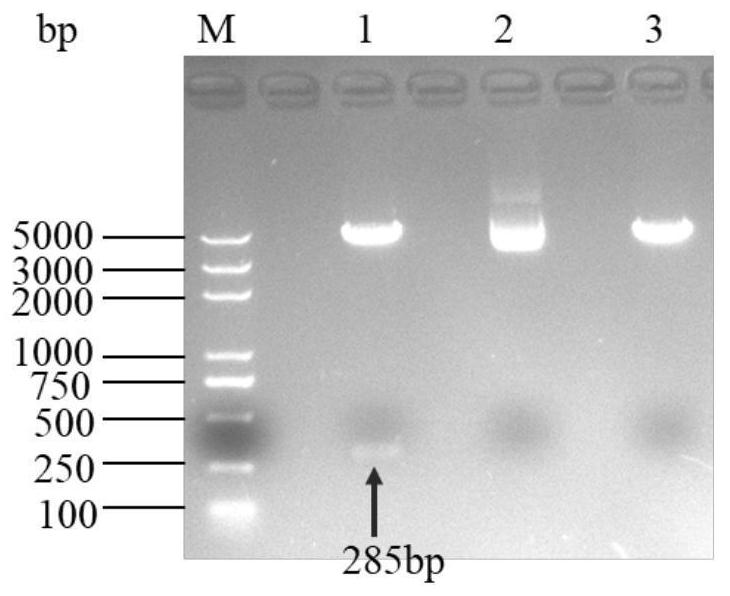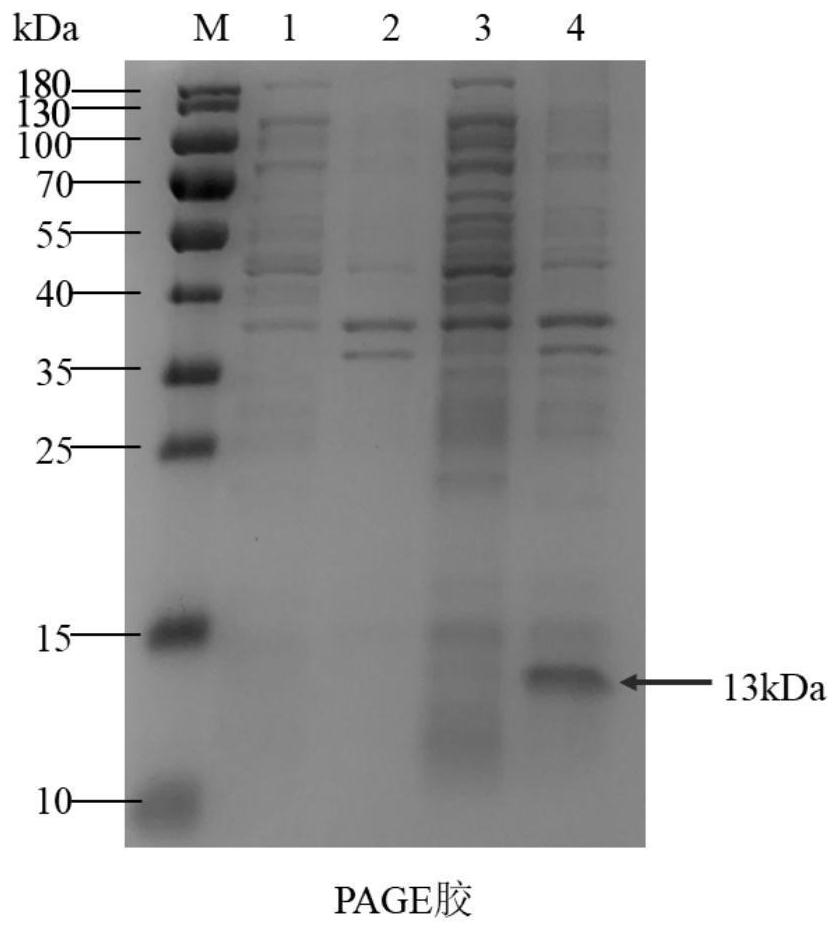Indirect ELISA (Enzyme-Linked Immunosorbent Assay) detection kit for detecting porcine coronavirus D
A detection kit and coronavirus technology, applied in the biological field, can solve the difficulty of serological research and other problems, and achieve the effect of low cost, strong specificity and high expression
- Summary
- Abstract
- Description
- Claims
- Application Information
AI Technical Summary
Problems solved by technology
Method used
Image
Examples
preparation example Construction
[0030] The present invention also provides a method for preparing the above-mentioned expression vector, including:
[0031] Using the PDCoV-NS6 gene (SEQ ID NO.1) as a template, PDCoV-NS6-F (5'-CCGGAATTCATGTGCAACTGCCAT-3') and PDCoV-NS6-R (5'-TGCTCTAGATTAATTTAATTCATCTTC-3') were used as primers for PDCoV-NS6- The NS6 gene was amplified by PCR to obtain a PDCoV-NS6 gene containing EcoR I and Xba I restriction sites at both ends, and the PDCoV-NS6 gene containing EcoR I and Xba I restriction sites was cloned into the prokaryotic expression vector pCold I The EcoR I / Xba I site obtained the pCold I-PDCoV-NS6 prokaryotic expression vector expressing porcine D-coronavirus NS6 protein.
[0032] In the present invention, the method for preparing PDCoV-NS6 protein using the above-mentioned expression vector includes: transforming the recombinant expression plasmid into the expression host Escherichia coli BL21, and collecting the bacterial cell precipitate, and obtaining the PDCoV-NS6...
Embodiment 1
[0045] The construction of embodiment 1 prokaryotic expression system and the preparation of PDCoV-NS6 protein
[0046] 1. Construction of NS6 gene expression vector
[0047] 1.1 Primer design
[0048] According to the NS6 gene sequence of porcine D-coronavirus strain (Genbank Accession Number: MW196362.1), use DNAstar software to design primers to amplify the NS6 fragment. The sequence of the upstream primer PDCoV-NS6-F is 5'-CCGGAATTCATGTGCAACTGCCAT-3', and the downstream primer The sequence of PDCoV-NS6-R is 5'-TGCTCTAGATTAATTTAATTCATCTTC-3'. Primers were synthesized by Shangya Biological Co., Ltd.
[0049] 1.2 Construction of pCold I-PDCoV-NS6 recombinant plasmid
[0050] The artificially synthesized PDCoV-NS6 gene fragment and the pCold I vector were digested with EcoR I and Xba I, respectively, and ligated to construct the pCold I-PDCoV-NS6 expression plasmid. will identify the correct recombinant plasmid (eg figure 1 shown) were sent to Shangya Biotech Co., Ltd. fo...
Embodiment 2
[0073] The operating procedure of embodiment 2 indirect ELISA method
[0075] Dilute the PDCoV-NS6 protein provided in Example 1 of the present invention as an antigen to 50ng / well / 100μL with coating buffer, then add it to the microtiter plate, take it out at 4°C overnight (12h-14h), and discard the well Inner liquid, wash 3 times with PBST, 3min each time, pat dry;
[0076] (2) closed
[0077] Add blocking solution (150 μL / well) to the microtiter plate and incubate at 37° C. for 120 min. Take it out, discard the blocking solution, wash with PBST 3 times, each time for 3 minutes, and pat dry;
[0078] (3) Sample addition
[0079] The sample was diluted 1:100 with blocking solution, added to the microtiter plate, 100 μL / well, and incubated at 37°C for 30 minutes. After taking it out, discard the liquid in the well, wash with PBST 3 times, each time for 3 minutes, and pat dry;
[0080] (4) Add secondary antibody
[0081] The secondary antibody...
PUM
 Login to View More
Login to View More Abstract
Description
Claims
Application Information
 Login to View More
Login to View More - R&D
- Intellectual Property
- Life Sciences
- Materials
- Tech Scout
- Unparalleled Data Quality
- Higher Quality Content
- 60% Fewer Hallucinations
Browse by: Latest US Patents, China's latest patents, Technical Efficacy Thesaurus, Application Domain, Technology Topic, Popular Technical Reports.
© 2025 PatSnap. All rights reserved.Legal|Privacy policy|Modern Slavery Act Transparency Statement|Sitemap|About US| Contact US: help@patsnap.com



